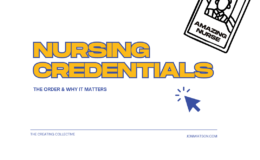The Article: van der Spek, E. (2011). Advanced care planning: How does current practice compare with best practice? PACEsetterS, 8(3): 34-39.
Big Idea: This study examined the advanced care planning (ACP) within one Australian Residential Aged Care Facility (RACF), which sounds similar to the U.S. equivalent of a “nursing home.” The researcher found evidence of current best practices and then audited 71 patient charts and all 17 staff training records against six ACP practice and education questions. Once the audit was complete, the RACF changed ACP practices to match evidence-based interventions and then re-evaluated patient charts and training records to see if the interventions made a difference.
Survey Says!: All 71 patients had ACPs, but the author found less than 40% of them were completed correctly. In addition, none of the 17 nurses had completed regular, specialized education or training related to ACP. Needless to say, the researcher and team worked to improve the ACP documentation form to improve accuracy, and nurses received ACP training. The post-intervention audit did reveal improved results. 52% of patient charts/ACPs were accurate, and 88% of nurses completed ACP training and specialized education.
Quotable: “An advanced care plan completed by a competent individual enables them to extend their autonomy in decision making even when they are no longer able to make or convey decisions for themselves [references]” (p. 37).
“Given that the nurses initially described feelings of discomfort in discussing ACP, and that some residents and relatives had been reluctant to discuss end-of-life care, it was evident that there were barriers that needed to be addressed. The literature suggests lack of time, personal discomfort in talking about death, lack of knowledge about ACP, or a paternalistic view of end-of-life care decision making may all be barriers to ACP [references]” (p. 39).
So What?: These results may not seem like a big deal, but it is actually quite impressive considering the intervention – changing the ACP documentation form for improved accuracy and targeted education effort – occurred within a three-month time frame. The project timeline (on page 36) is lovely and ambitious, as the researcher began the project in January and finished the final audit and began drafting the article manuscript in June. “Research” can be very daunting, but this article and research study are beautifully simplistic, highlighting every nurse’s opportunity to contribute to the nursing body of knowledge. The author knew there was a problem. She proved it objectively, researched the evidence, implemented a few best practices, re-evaluated the original objective measures, and shared what she did and learned. Not only can we all learn from the author’s design and intervention to improve advanced care planning for the aged, but we can also find the underlying encouragement in her writing to do the same – do what we all went to school for: improve patient care utilizing evidence and then contribute right back to the evidence.





